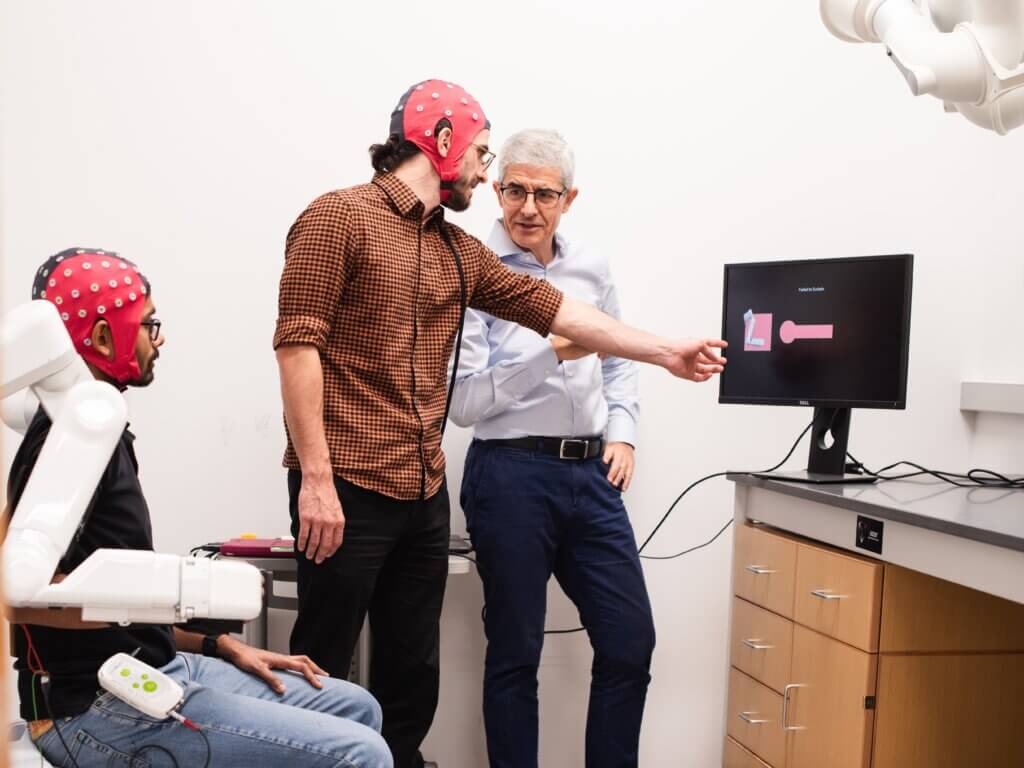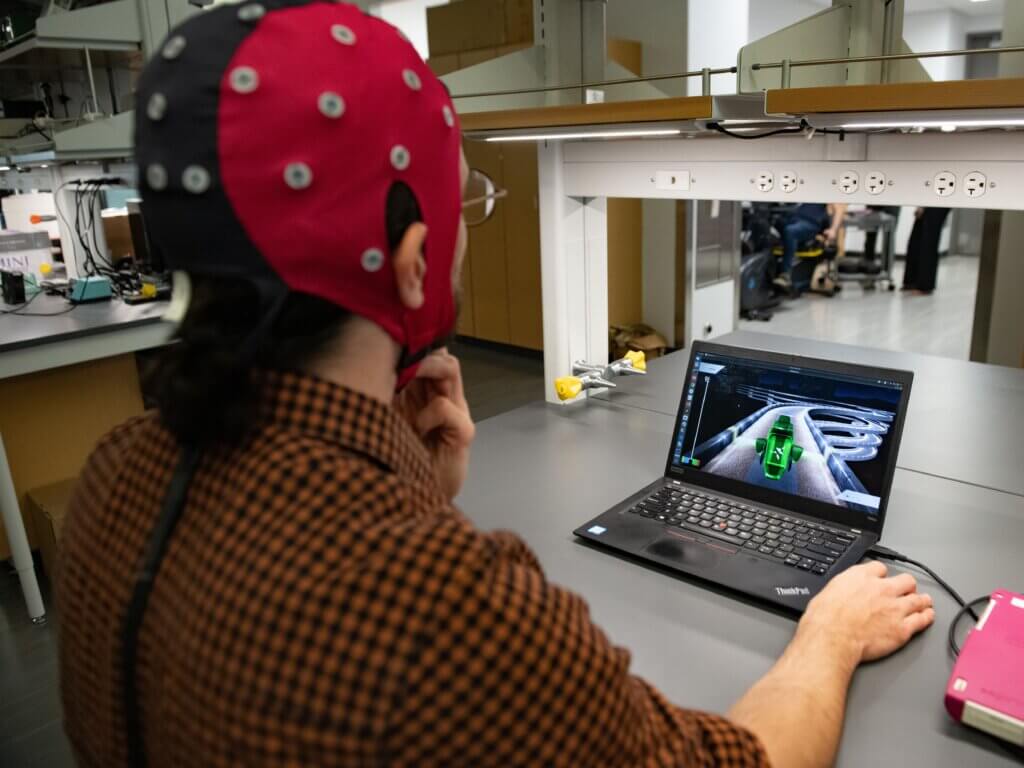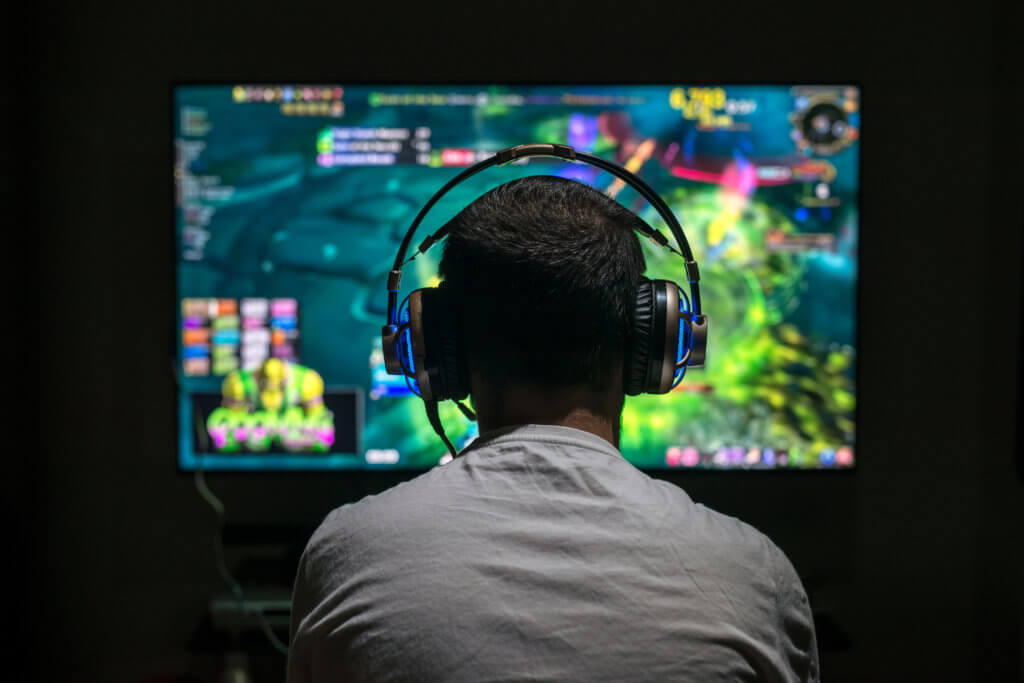Imagine playing “Call of Duty” with your friends by just using your thoughts. That could soon become reality thanks to brain-computer interface (BCI) technology developed by researchers at the University of Texas at Austin. BCIs read brain signals and translate them into commands for devices. However, learning to control a BCI is challenging, typically requiring users to go through a lengthy calibration process to train the system to recognize their unique brain patterns.
Now, researchers created a new approach that could allow novice users to skip this tedious training and start using a BCI right away. Their secret? Borrowing brain signal patterns from an expert user.
The findings have been published in the journal PNAS Nexus.
In a typical BCI setup, users are asked to imagine specific movements, like moving their left or right hand. As they do this, the BCI system records their brain activity using electroencephalography (EEG), which measures electrical signals from the brain using sensors placed on the scalp. The system then learns to recognize the patterns associated with each imagined movement.

The UT Austin team realized that this calibration process could be avoided if the BCI system was pre-trained on data from an expert user who has already mastered the skill of mentally controlling the device.
“When we think about this in a clinical setting, this technology will make it so we won’t need a specialized team to do this calibration process, which is long and tedious,” says study author Satyam Kumar, a graduate student in the lab of José del R. Millán, a professor in the Cockrell School of Engineering’s Chandra Family Department of Electrical and Computer Engineering and Dell Medical School’s Department of Neurology, in a media release. “It will be much faster to move from patient to patient.”
But there’s a catch. Brain signals can vary significantly from person to person, so a system trained on one person’s data might not work well for someone else. To overcome this hurdle, researchers developed two machine learning frameworks, Generic Recentering (GR) and Personally Assisted Recentering (PAR), that adapt the expert’s brain patterns to match a new user’s unique neural signature.
The GR framework continuously adjusts the expert’s data to align with the novice user’s brain signals, without changing the underlying pattern recognition model. The PAR framework goes a step further by also fine-tuning the model’s parameters based on a small sample of the new user’s data.
To test these frameworks, the team recruited 18 BCI novices and had them practice using the system over five sessions. Half used the GR approach, while the other half used PAR. The participants controlled a simple bar on a screen and played a car racing game using only their imagined hand movements.
The novices were able to achieve significant control from the very first session, showing that the transferred brain patterns provided a viable starting point. Over the course of training, they continued to improve, with their neural patterns evolving to become distinct from the original expert’s.
The neural patterns the participants learned for controlling the bar task were different from those they developed for the racing game, suggesting that BCIs can be flexibly adapted to different contexts. Researchers also found that the simpler GR framework performed just as well as the more complex PAR approach, indicating that extensive system recalibration may not be necessary.

This study represents a significant step towards making BCIs more user-friendly and accessible. By tapping into the neural knowledge of experts, these transfer learning techniques could reduce the barrier to entry for new users, whether they’re patients seeking to regain lost motor functions or gamers looking to enhance their play.
“On the one hand, we want to translate the BCI to the clinical realm to help people with disabilities; on the other, we need to improve our technology to make it easier to use so that the impact for these people with disabilities is stronger,” notes study author Millán.
As BCI technology continues to advance, it’s tantalizing to imagine a future where mind-controlled devices — especially for video gamers — are a part of everyday life. With the power of shared neural patterns, that future may be closer than we think.












